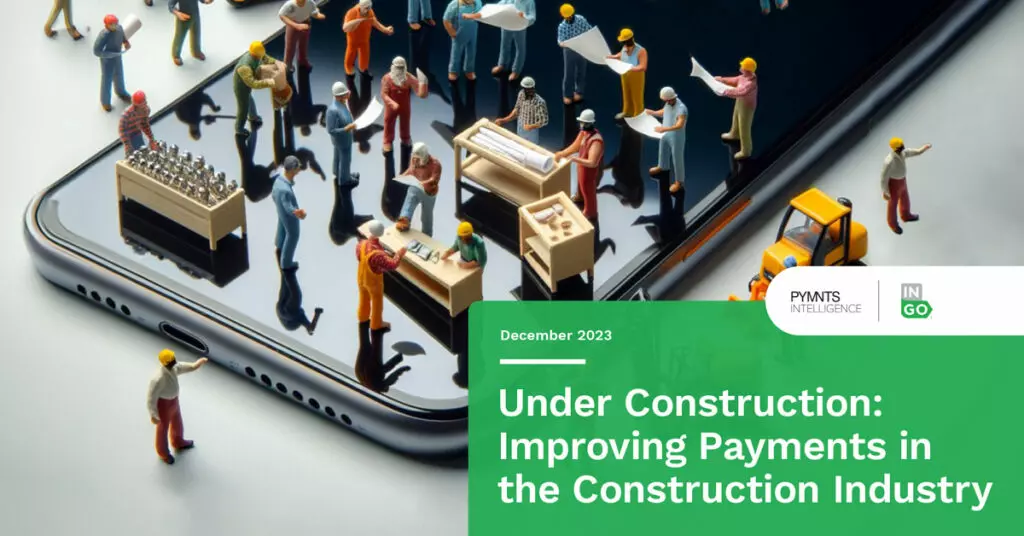Federal Deadline Looms as Agencies Struggle to Move Beyond ACH Payments
A looming Sept. 30 deadline set by an executive order to digitize federal government disbursements, a move affecting $175 billion worth of payments last year, presents a formidable, yet critical, challenge for federal agencies.
The mandate, issued by President Donald Trump, aims to usher in a new era of public sector payments, moving away from cumbersome paper checks to digital rails such as direct deposit, debit and credit card payments, and digital wallets, with the ultimate goal of paving the way for real-time transfers.
Ingo Payments President and Chief Operating Officer Rusty Pickering told PYMNTS that the federal agencies “need to modernize their payment systems … and the timeline is pretty tight.”
Even large, agile private sector entities like insurance companies often require a year or more for such implementations, he said. The federal government faces a unique set of challenges, starting with a fundamental data gap, as many recipients currently receiving checks may only have a name and a physical mailing address on file.
While the government has made strides in enabling direct deposit through the ACH system, successfully transitioning many recipients, a substantial “long tail” remains, Pickering said.
This segment comprises individuals who have not yet engaged with the government to enable ACH, often due to a variety of reasons. These include a lack of digital contact information, not possessing a traditional bank account with an ACH routing number, or having a prepaid account where the routing number is not easily accessible. For some, a bank account simply doesn’t exist at all.
The Imperative of Payment Choice
The reliance on ACH as the primary digital payment channel for government disbursements falls short of meeting the diverse needs of the population.
“To reach everybody, you need to meet them where they are,” Pickering said.
This means enabling instant payment methods beyond ACH, which primarily caters to traditional checking accounts. Visa and Mastercard, for instance, have long enabled instant payments to debit cards, requiring only the card number, expiration date, CVV and name. Other instant payment avenues, such as PayPal, also exist but are not yet enabled at the federal government level.
Consumer preferences underscore the need for choice. Data from Ingo Payments revealed that over 80% of consumers choose debit cards when presented with a menu of payment options, largely because debit cards are ubiquitous and consumers are accustomed to using them online.
Pickering pointed out that many consumers, particularly millennials, are unfamiliar with checkbooks or even what an ACH routing number is.
“Ask a millennial where their checkbook is to find their routing number — they’re going to look at you quizzically because they don’t even know what a checkbook is,” Pickering said.
PayPal ranks as the next most popular choice, followed by ACH. Interestingly, a small segment, like Pickering’s own mother, still prefers checks, highlighting the need for a comprehensive approach that prioritizes digital disbursements while acknowledging existing preferences.
For those who lack any form of bank or prepaid account, the government will need the capability to issue new accounts, such as virtual or physical prepaid cards.
This comprehensive approach — integrating new payment rails, building associated security systems, verifying recipients and accounts, implementing fraud mechanisms, and establishing dispute resolution and customer service capabilities — is an “enormous amount of work,” but ultimately “enables everybody to be paid the way that they want to be paid,” Pickering said.
Forging Partnerships for Broader Reach and Connectivity
Connecting to these diverse payment rails is not merely a technical integration; it requires a complex ecosystem of support systems. Each rail demands specific connectivity, account validation and verification procedures, along with tailored customer service to handle disputes and issues.
However, companies like Ingo Payments have already navigated these complexities and offer “a full package of services” that enable these capabilities. Ingo, for instance, is already connected to networks like Visa and Mastercard, as well as PayPal and the ACH rails. It also retains the capability to issue a check if a recipient is insistent, although the goal is to shift away from this option.
Revolutionizing Operational Costs and Efficiency
Beyond consumer preference and reach, the shift to digital disbursements promises operational and cost efficiencies. The government spends an estimated $700 million annually on the paper-based record-keeping and processing associated with checks.
“The cost of producing and mailing checks can cost between $6 and $15,” Pickering said.
But the true cost of issuing a paper check extends beyond printing and mailing, encompassing a myriad of logistical issues such as checks being lost in transit, forgotten in drawers or stolen.
While the cost of mailing a check can vary, a digital payment can be executed for a “fraction of that cost,” leading to potential savings of 90% or more, he said.
Perhaps one of the most compelling arguments for digitizing government disbursements is the reduction in fraud vulnerability.
Paper checks are inherently susceptible to numerous “attack vectors,” Pickering said. Once a check is mailed, control is lost, making it vulnerable to mail fraud, where checks are stolen, “washed” with chemicals like acetone to alter payee names, or counterfeited entirely.
Digital payments make it “a lot easier to put in place fraud prevention on digital payments on the front end,” Pickering said, adding that “we have a lot of experience with check fraud. We have one of the only instant disbursement capabilities tied to a check. So, we know more than most about check fraud.”
Furthermore, digital payments create a robust “digital trail” that logs and tracks all transactions. This trail simplifies dispute resolution, making it harder for someone to falsely claim they didn’t receive a payment if they logged in, provided proper credentials, and their device and contact information match.
The experience of Ingo Payments suggests that fraud in digital disbursements is “fairly low,” as most payment fraud occurs when money is being pulled out of an account rather than disbursed, Pickering said.
But with device analysis — checking if the device is spoofed, examining its currency, time zone, manufacturer, data source and geolocation — and third-party data sources, the fraud rates can be cut down even more.
Payments choice will give rise to financial inclusion, Pickering said.
“We [at Ingo] have been in the business of allowing the underbanked and underserved to digitize their checks and load them into their accounts,” or in other cases, can issue a prepaid card after verifying their details digitally, he said.
“The full solution in our view is to give the consumer choice,” Pickering said. “That’s the critical thing — to interact with them digitally and give them a menu of choices.”



